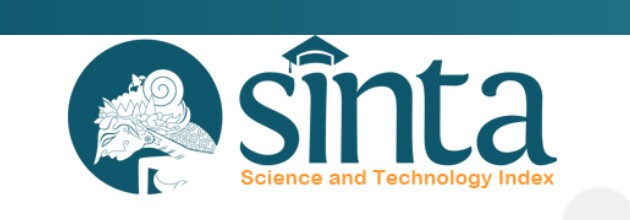CUKA AREN (Arenga pinnata): KAJIAN PEMANFAATAN OLEH INDIGENOUS PEOPLE KAMPUNG ADAT KUTA BERDASARKAN FLOK KNOWLEGDE
Abstract
Palm vinegar is one of the processed products from a type of plant from the Arecaceae family, namely Arenga pinnata. Arenga vinegar is used by the people of the Kuta traditional village as a traditional medicine to treat a disease or prevent disease, this is based on folk knowledge, experience and ancestral traditions passed down from generation to generation in using plants as medicine. However, their utilization practices have not been published, identified and documented. Therefore, this study aims to describe the stages of making arenga vinegar and the practice of using it as a traditional medicine in Kuta Traditional Village. This research was conducted in Kuta Traditional Village, Tambak Sari District, Karangpaninggal Village, Ciamis Regency, in January-February 2021. This research is qualitative research study using the phenomenological method, the data collection technique used in this study are passive participation and active participation observation, semi-structured interviews with 4 people, namely 3 men and 1 woman, and document studies were carried out. The results showed that the arenga vinegar making stages in Kuta Traditional Village includes the process of lodong sterilizer, tapping arenga juice, filtering arenga juice, storing and fermenting arenga juice. As for its use, arenga vinegar is believed to be a traditional medicine such as types of fever, aches, liver, diabetes, stomach acid and external wounds.
Keywords
Full Text:
PDFReferences
Adeng, Alamsyah P., S., Herlinawati, L., Irma R., E., Masduki, A., Suhawan, W., & Tirtayana. (2014). Kajian Kearifan Lokal di Kampung Kuta Kabupaten Ciamis. Bandung: Kementrian Pendidikan dan Kebudayaan Direktorat Jenderal Kebudayaan Balai Pelestarian Nilai Budaya Bandung.
Albuquerque, U. P., & Alves, R. R. N. (2016). Introduction to Ethnobiology. In Introduction to Ethnobiology. https://doi.org/10.1007/978-3-319-28155-1
Andyani, N. M. D. (2019). Perbedaan Zona Hambat Pertumbuhan Propionibacterium acnes Pada Berbagai Konsentrasi Cuka Apel (Apple Cider Vinegar) Secara In Vitro. Politeknik Kesehatan Denpasar.
Baharuddin, Syahidah, & Yatni, N. (2009). Penentuan Mutu Cuka Nira Aren (Arenga pinnata) Berdasarkan SNI 01-4371-1996. Perennial, 5(1), 31. https://doi.org/10.24259/perennial.v5i1.187
Beh, B. K., Mohamad, N. E., Yeap, S. K., Lim, K. L., Ho, W. Y., Yusof, H. M., … Alitheen, N. B. (2016). Polyphenolic Profiles and the In vivo Antioxidant Effect of Nipa Vinegar on Paracetamol Induced Liver Damage. RSC Advances, 6(68), 63304–63313. https://doi.org/10.1039/c6ra13409b
Belitz, H. D., Grosch, W., & Schieberle, P. (2009). Food Chemistry. Food Chemistry, (December 2008), 1–1070. https://doi.org/10.1007/978-3-540-69934-7
Dimariwu, E. H., Tyasningsih, W., Rahmahani, J., Ernawati, R., Effendi, M. H., & Handijatno, D. (2020). Aktivitas Antimikrob Cuka Apel terhadap Multidrug Resistance Staphylococcus aureus yang Diisolasi dari Luka Infeksi Anjing di Surabaya. 21(36), 292–299. https://doi.org/10.19087/jveteriner.2020.21.2.292
Elfahmi, Woerdenbag, H. J., & Kayser, O. (2014). Jamu: Indonesian Traditional Herbal Medicine Towards Rational Phytopharmacological Use. Journal of Herbal Medicine, 4(2), 51–73. https://doi.org/10.1016/j.hermed.2014.01.002
Firmansyah, E. K., & Putrisari, N. D. (2017). Sistem Religi dan Kepercayaan Masyarakat Kampung. Jurnal Pengabdian Kepada Masyarakat, 1, 236–243.
Gu, X., Zhao, H. L., Sui, Y., Guan, J., Chan, J. C. N., & Tong, P. C. Y. (2012). White Rice Vinegar Improves Pancreatic Beta-cell Function and Fatty Liver in Streptozotocin-induced Diabetic Rats. Acta Diabetologica, 49(3), 185–191. https://doi.org/10.1007/s00592-010-0184-6
Handayani, A. (2015). Pemanfaatan Tumbuhan Berkhasiat Obat Oleh Masyarakat Sekitar Cagar Alam Gunung Simpang, Jawa Barat. 1(6), 1425–1432. https://doi.org/10.13057/psnmbi/m010628
Hardoko, Sasmito, B. B., & Fitriani, E. N. (2020). Studi Aktivitas Antidiabet Cuka Buah Mangrove Pedada (Sonneratia alba) Secara in Vivo. JFMR-Journal of Fisheries and Marine Research, 4(3), 399–407. https://doi.org/10.21776/ub.jfmr.2020.004.03.13
Hasanah, H. (2017). Teknik-teknik Observasi (Sebuah Alternatif Metode Pengumpulan Data Kualitatif Ilmu-ilmu Sosial). At-Taqaddum, 8(1), 21. https://doi.org/10.21580/at.v8i1.1163
Irawan, B., Rahmayani, E., & Iskandar, J. (2009). Studi Variasi, Pemanfaatan, Pengolahan dan Pengelolaan Aren di Desa Rancakalong, Kecamatan Rancakalong, Kabupaten Sumedang, Jawa Barat. Seminar Nasional Etnobotani IV, 1–25.
Joseph, N., & Savitri, T. (2020). Cuka Apel: Manfaat Bagi Kesehatan, Efek Samping, dan Cara Pakainya. Retrieved March 3, 2021, from Hello Sehat, Kementrian Kesehatan Republik Indonesia website: https://hellosehat.com/nutrisi/fakta-gizi/manfaat-cuka-apel-efek-samping/#gref
Kusmana, C., & Hikmat, A. (2015). The Biodiversity of Flora in Indonesia. Journal of Natural Resources and Environmental Management, 5(2), 187–198. https://doi.org/10.19081/jpsl.5.2.187
Lempang, M. (2012). Pohon Aren dan Manfaat Produksinya. Info Tekhnis Eboni, 9, 37–54.
Mohammed, F. A., & Ahmed, E. I. (2012). A Comparison of Vinegar Compresses vs. Cold Water & Water with Vinegar for treating of Fever at Tropical Hospitals. International Journal of Nursing Science, 2(4), 38–46. https://doi.org/10.5923/j.nursing.20120204.03
Mufti, N., Bahar, E., & Arisanti, D. (2017). Uji Daya Hambat Ekstrak Daun Sawo terhadap Bakteri Escherichia coli secara In Vitro. Jurnal Kesehatan Andalas, 6(2), 289–294. https://doi.org/10.25077/jka.v6i2.693
Naibaho, N. M., Ramadhan, A. F., Lisnawati, A., Rahman, M., & Popang, E. G. (2017). Fermentasi Sistem Aerob dan Anaerob dalam Pembuatan Cuka Dari Nira Aren (Arenga pinnata). 14(01), 13–19.
Natawijaya, D., Suhartono, & Undang. (2018). Analisis Rendemen Nira Kualitas Gula Aren (Arenga pinnata Merr.) di Kabupaten Tasikmalaya. Jurnal Agroforestri Indonesia, 1(1), 57–64. https://doi.org/10.20886/jai.2018.1.1.57-64
Niemistö, J. (2014). Towards Sustainable and Efficient Biofuels Production : Use of Pervaporation in Product Recovery and Purification.
Nuryanti, S., Linda, R., & Lovadi, I. (2015). Pemanfaatan Tumbuhan Arecaceae (Palem-Paleman) Oleh Masyarakat Dayak Randu Di Desa Batu Buil Kecamatan Belimbing Kabupaten Melawi. Protobiont, 4(1), 128–135.
Purwitasari, H., Yuliet, & Ihwan. (2017). Efek Antipiretik Kombinasi Ekstrak Daun Cocor Bebek (Kalanchoe pinnata L.) dan Ekstrak Daun Tembelekan (Lantana camara L.) Terhadap Marmut (Cavia porcellus) Dengan Demam Yang Diinduksi Pepton. Jurnal Farmasi Galenika (Galenika Journal of Pharmacy), 3(1), 43–48.
Raudah, Zubaidah, T., & Santoso, I. (2017). Efektivitas Sterilisasi Metode Panas Kering Pada Alat Medis Ruang Perawatan Luka Rumah Sakit dr. H. Soemarno Sostroatmodjo Kuala Kapuas. Jurnal Kesehatan Lingkungan, 14(1), 425–430.
Rezani, M. I., Safira, D., Khalidah, Sholahuddin, A., & Analita, R. N. (2020). Tanaman Herbal Cocor Bebek (Kalanchoe pinnata (lam.) pers.) Sebagai Kompres Dingin Untuk Menurunkan Demam : Sebuah Tinjauan. Seminar Nasional Pendidikan Fisika, 65–70. Banjarmasin.
Rintelen, K. Von, Arida, E., & Häuser, C. (2017). A Review of Biodiversity-related Issues and Challenges in Megadiverse Indonesia and other Southeast Asian Countries. Research Ideas and Outcomes, 3, e20860. https://doi.org/10.3897/rio.3.e20860
Ryandita, F. R., Hernawati, D., & Putra, R. R. (2020). Indigenous People Kampung Kuta Kabupaten Ciamis: Kajian Etnobotani Pemanfaatan Kelapa (Cocos nucifera L.). Florea : Jurnal Biologi Dan Pembelajarannya, 7(2), 54. https://doi.org/10.25273/florea.v7i2.7886
Situmorang, T. S., & Sihombing, E. S. R. (2018). Kajian Pemanfaatan Tumbuhan Obat Pada Masyarakat Suku Simalungun di Kecamatan Raya Desa Raya Bayu dan Raya Huluan Kabupaten Simalungun. Jurnal Biologi Lingkungan, Industri, Kesehatan, 4(2).
Sugiyono. (2016). Metode Penelitian Kuantitatif, Kualitatif, dan R&D (23rd ed.). Bandung: ALFABETA.
Sumendap, H. K., Pesik, M. U., & Lagarense, B. E. S. (2015). Penggunaan Cuka Aren (Arenga Pinnata Merr) dalam Pengolahan Makanan Seafood: Studi Eksperimen. Jurnal Hospitality Dan Pariwisata, 2(1), 1–107. Retrieved from http://jurnal.polimdo.ac.id/index.php/pariwisata/article/view/42/
Yudianti, I., Suprapti, & Hupitoyo. (2015). Perbandingan Efektifitas Sterilisasi Panas Kering dan Desinfeksi Tingkat Tinggi Teknik Rebus terhadap Pertumbuhan Escherichia Coli. Jurnal Pendidikan Dan Pelayanan Kebidanan Indonesia, 2(1), 8–14. https://doi.org/10.24198/ijemc.v2i1.66
Zahra, E. H. R., Harsodjo WS, S., & Maifritrianti. (2017). Aktivitas Penyembuhan Luka Bakar Fraksi Ekstrak Etanol 96% Daun Cocor Bebek (Kalanchoe pinnata) [Lam.] Pers. Farmasains, 4(1), 1–7.
Zubaidah, E., & Nuril F, I. (2015). Efek Cuka Apel dan Cuka Salak terhadap Penurunan Glukosa Darah dan Histopatologi Pankreas Tikus Wistar. Kedokteran Brawijaya, 28(4), 297–301
Article Metrics
Abstract has been read : 1026 timesPDF file viewed/downloaded: 0 times
DOI: http://doi.org/10.25273/florea.v8i1.8913
Refbacks
- There are currently no refbacks.
Copyright (c) 2021 Florea : Jurnal Biologi dan Pembelajarannya

This work is licensed under a Creative Commons Attribution-ShareAlike 4.0 International License.
Florea: Jurnal Biologi dan Pembelajarannya indexed by:



Copyright Florea: Jurnal Biologi & Pembelajarannya
View Florea Stats





